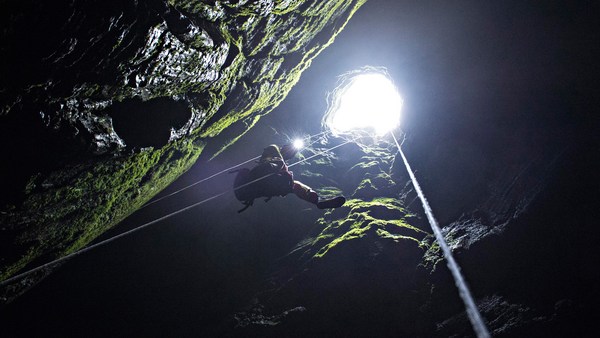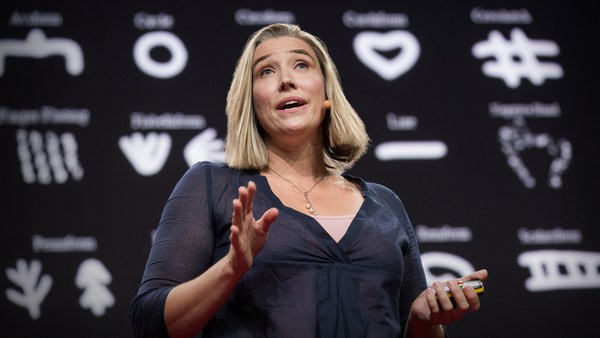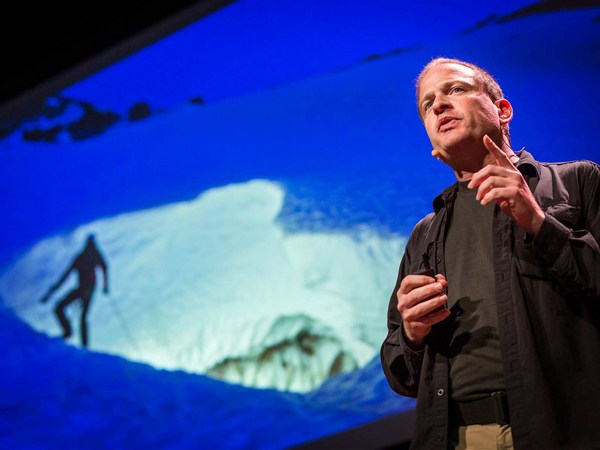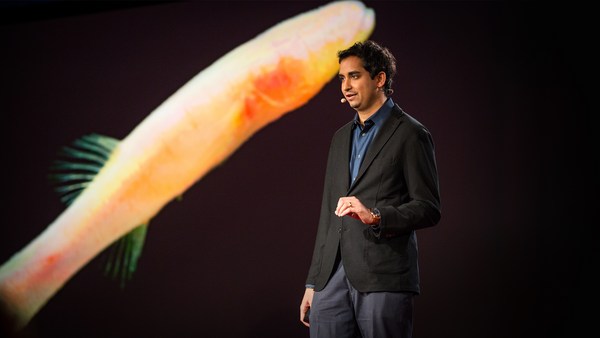I'm an underwater explorer, more specifically a cave diver.
I wanted to be an astronaut when I was a little kid, but growing up in Canada as a young girl, that wasn't really available to me. But as it turns out, we know a lot more about space than we do about the underground waterways coursing through our planet, the very lifeblood of Mother Earth. So I decided to do something that was even more remarkable. Instead of exploring outer space, I wanted to explore the wonders of inner space.
Now, a lot of people will tell you that cave diving is perhaps one of the most dangerous endeavors. I mean, imagine yourself here in this room, if you were suddenly plunged into blackness, with your only job to find the exit, sometimes swimming through these large spaces, and at other times crawling beneath the seats, following a thin guideline, just waiting for the life support to provide your very next breath. Well, that's my workplace.
But what I want to teach you today is that our world is not one big solid rock. It's a whole lot more like a sponge. I can swim through a lot of the pores in our earth's sponge, but where I can't, other life-forms and other materials can make that journey without me. And my voice is the one that's going to teach you about the inside of Mother Earth.
There was no guidebook available to me when I decided to be the first person to cave dive inside Antarctic icebergs. In 2000, this was the largest moving object on the planet. It calved off the Ross Ice Shelf, and we went down there to explore ice edge ecology and search for life-forms beneath the ice.
We use a technology called rebreathers. It's an awful lot like the same technology that is used for space walks. This technology enables us to go deeper than we could've imagined even 10 years ago. We use exotic gases, and we can make missions even up to 20 hours long underwater.
I work with biologists. It turns out that caves are repositories of amazing life-forms, species that we never knew existed before. Many of these life-forms live in unusual ways. They have no pigment and no eyes in many cases, and these animals are also extremely long-lived. In fact, animals swimming in these caves today are identical in the fossil record that predates the extinction of the dinosaurs. So imagine that: these are like little swimming dinosaurs. What can they teach us about evolution and survival? When we look at an animal like this remipede swimming in the jar, he has giant fangs with venom. He can actually attack something 40 times his size and kill it. If he were the size of a cat, he'd be the most dangerous thing on our planet. And these animals live in remarkably beautiful places, and in some cases, caves like this, that are very young, yet the animals are ancient. How did they get there?
I also work with physicists, and they're interested oftentimes in global climate change. They can take rocks within the caves, and they can slice them and look at the layers within with rocks, much like the rings of a tree, and they can count back in history and learn about the climate on our planet at very different times. The red that you see in this photograph is actually dust from the Sahara Desert. So it's been picked up by wind, blown across the Atlantic Ocean. It's rained down in this case on the island of Abaco in the Bahamas. It soaks in through the ground and deposits itself in the rocks within these caves. And when we look back in the layers of these rocks, we can find times when the climate was very, very dry on earth, and we can go back many hundreds of thousands of years.
Paleoclimatologists are also interested in where the sea level stands were at other times on earth. Here in Bermuda, my team and I embarked on the deepest manned dives ever conducted in the region, and we were looking for places where the sea level used to lap up against the shoreline, many hundreds of feet below current levels.
I also get to work with paleontologists and archaeologists. In places like Mexico, in the Bahamas, and even in Cuba, we're looking at cultural remains and also human remains in caves, and they tell us a lot about some of the earliest inhabitants of these regions.
But my very favorite project of all was over 15 years ago, when I was a part of the team that made the very first accurate, three-dimensional map of a subterranean surface. This device that I'm driving through the cave was actually creating a three-dimensional model as we drove it. We also used ultra low frequency radio to broadcast back to the surface our exact position within the cave. So I swam under houses and businesses and bowling alleys and golf courses, and even under a Sonny's BBQ Restaurant,
Pretty remarkable, and what that taught me was that everything we do on the surface of our earth will be returned to us to drink. Our water planet is not just rivers, lakes and oceans, but it's this vast network of groundwater that knits us all together. It's a shared resource from which we all drink. And when we can understand our human connections with our groundwater and all of our water resources on this planet, then we'll be working on the problem that's probably the most important issue of this century.
So I never got to be that astronaut that I always wanted to be, but this mapping device, designed by Dr. Bill Stone, will be. It's actually morphed. It's now a self-swimming autonomous robot, artificially intelligent, and its ultimate goal is to go to Jupiter's moon Europa and explore oceans beneath the frozen surface of that body.
And that's pretty amazing.
(Applause)





